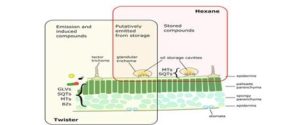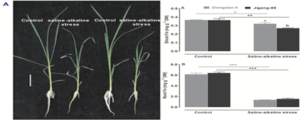Fascination of Plants Day 2015 – SUCCESS STORIES
Official SUCCESS STORIES Report for FoPD 2015
Thanks to the voluntary contributions and hard work of many people in the plant science community around the world the Fascination of Plants Day 2015 was a huge success. This publication celebrates how so much diversity – in terms of individual demographics, activity content and geography – was an important factor in this successful movement to engage people everywhere over the fascinating contributions of plants to our world.
This report also can inspire activities for anyone to create in their own communities in 2016 and/or as part of the next FoPD, May 2017.


 As a consequence of their ability to fix nitrogen in symbiosis with bacteria, legumes make key contributions to ecosystems and provide protein-rich foods for humans and other animals. Recent years have uncovered the nature of the signals involved in the cross-kingdom dialogues that occur between plant and bacteria and the systemic signals that optimize nodule activities. Murray et al. review nitrogen sensors and signals, as well as nitrate sensing through transceptors, peptide signals for N status in nodulation, and the contributions of hormones to nodule formation. Future research questions include the effect of N status on signaling between plant and bacteria and the influence of carbon / nitrogen imbalance on nodule activity. J. Exp. Bot.
As a consequence of their ability to fix nitrogen in symbiosis with bacteria, legumes make key contributions to ecosystems and provide protein-rich foods for humans and other animals. Recent years have uncovered the nature of the signals involved in the cross-kingdom dialogues that occur between plant and bacteria and the systemic signals that optimize nodule activities. Murray et al. review nitrogen sensors and signals, as well as nitrate sensing through transceptors, peptide signals for N status in nodulation, and the contributions of hormones to nodule formation. Future research questions include the effect of N status on signaling between plant and bacteria and the influence of carbon / nitrogen imbalance on nodule activity. J. Exp. Bot.  Tansy plants (Tanacetum vulgare L.) have diverse ethnobotanical uses including that of insect repellent, as a consequence of their production of volatile terpenes. Clancy et al. investigated the diversity of these emitted terpenes, and how they affect colonization by aphids and the ants that tend them in plants from a single field site. The authors show that the methods used to collect and analyze terpenes influences their findings. By using different methods, they identified compounds constitutively stored, induced and emitted, and emitted from storage, with the latter group showing stable profiles from individual plants and their clones. Further, the profiles of these emitted-from-storage compounds, including less abundant ones, were correlated with aphid colonization. Sci. Rep.
Tansy plants (Tanacetum vulgare L.) have diverse ethnobotanical uses including that of insect repellent, as a consequence of their production of volatile terpenes. Clancy et al. investigated the diversity of these emitted terpenes, and how they affect colonization by aphids and the ants that tend them in plants from a single field site. The authors show that the methods used to collect and analyze terpenes influences their findings. By using different methods, they identified compounds constitutively stored, induced and emitted, and emitted from storage, with the latter group showing stable profiles from individual plants and their clones. Further, the profiles of these emitted-from-storage compounds, including less abundant ones, were correlated with aphid colonization. Sci. Rep.  It is widely stated that domestication has contributed to a decrease in plant resistance to herbivory, but to what extent is this true? In a contribution to a special issue on “Human influences on evolution”, Whitehead et al. describe results of their meta-analysis. Although their data show a consistent reduction in herbivore resistance associated with domestication, the presence of secondary metabolites and physical feeding barriers was more variable. The authors conclude that the effects of domestication are mainly observed in the reproductive organs or the plant organ that is harvested. Phil. Trans. Roy. Soc. B.
It is widely stated that domestication has contributed to a decrease in plant resistance to herbivory, but to what extent is this true? In a contribution to a special issue on “Human influences on evolution”, Whitehead et al. describe results of their meta-analysis. Although their data show a consistent reduction in herbivore resistance associated with domestication, the presence of secondary metabolites and physical feeding barriers was more variable. The authors conclude that the effects of domestication are mainly observed in the reproductive organs or the plant organ that is harvested. Phil. Trans. Roy. Soc. B.  Cadmium (Cd) is among the most toxic heavy metal to humans. Contamination of Cd in soils poses a serious threat to both crop productivity and human health in many parts of the world. Understanding the molecular mechanisms of Cd transport process will help in developing plants for soil remediation and crop safety. Sedum alfredii is a nonbrassica plant species known to hyperaccumulate Cd. Tian et al. show that low calcium (Ca) supply significantly increased Cd contents in shoots particularly in the young leaves of S. alfredii. This paper also demonstrates that an extremely high Cd signal induced by low Ca supply occurred in the phloem tissues, but not in the xylem tissues. In summary, this paper strongly suggest that Ca deficiency triggers a highly efficient phloem transport system that remobilizes Cd out of its storage sites in plant tissues and subsequently enhances Cd localization in the new growth tissues of S. alfredii. (Summary by
Cadmium (Cd) is among the most toxic heavy metal to humans. Contamination of Cd in soils poses a serious threat to both crop productivity and human health in many parts of the world. Understanding the molecular mechanisms of Cd transport process will help in developing plants for soil remediation and crop safety. Sedum alfredii is a nonbrassica plant species known to hyperaccumulate Cd. Tian et al. show that low calcium (Ca) supply significantly increased Cd contents in shoots particularly in the young leaves of S. alfredii. This paper also demonstrates that an extremely high Cd signal induced by low Ca supply occurred in the phloem tissues, but not in the xylem tissues. In summary, this paper strongly suggest that Ca deficiency triggers a highly efficient phloem transport system that remobilizes Cd out of its storage sites in plant tissues and subsequently enhances Cd localization in the new growth tissues of S. alfredii. (Summary by 
 Although most flowering plants produce flowers with male and female parts, there are exceptions which are broadly classified as dioecious (two houses; each individual is male or female, usually associated with the presence of a sex chromosome) and monoecious (one house, separate male and female flowers in a single individual). Diploid persimmon plants are dioecious; the Y-chromosome bears a gene, OGI, encoding a small RNA that suppresses expression of a gene, MeGI, that promotes female flower development. Akagi et al. extend their studies to polyploid persimmon, in which plants are either female or monoecious. They show that the expression of MeGI is additionally regulated through two alternate DNA methylation states, conferring environmental plasticity to sex determination. Plant Cell
Although most flowering plants produce flowers with male and female parts, there are exceptions which are broadly classified as dioecious (two houses; each individual is male or female, usually associated with the presence of a sex chromosome) and monoecious (one house, separate male and female flowers in a single individual). Diploid persimmon plants are dioecious; the Y-chromosome bears a gene, OGI, encoding a small RNA that suppresses expression of a gene, MeGI, that promotes female flower development. Akagi et al. extend their studies to polyploid persimmon, in which plants are either female or monoecious. They show that the expression of MeGI is additionally regulated through two alternate DNA methylation states, conferring environmental plasticity to sex determination. Plant Cell